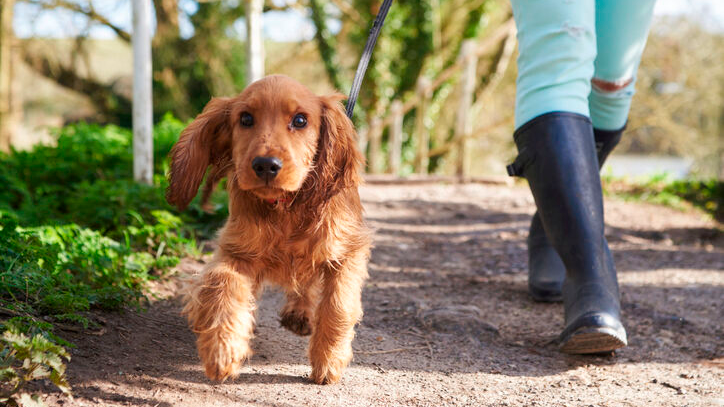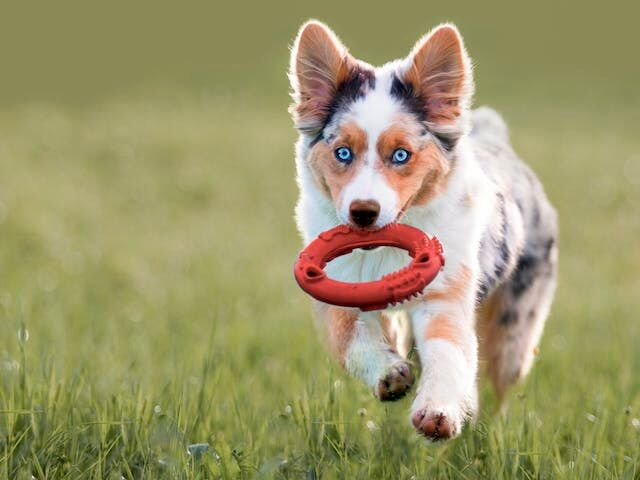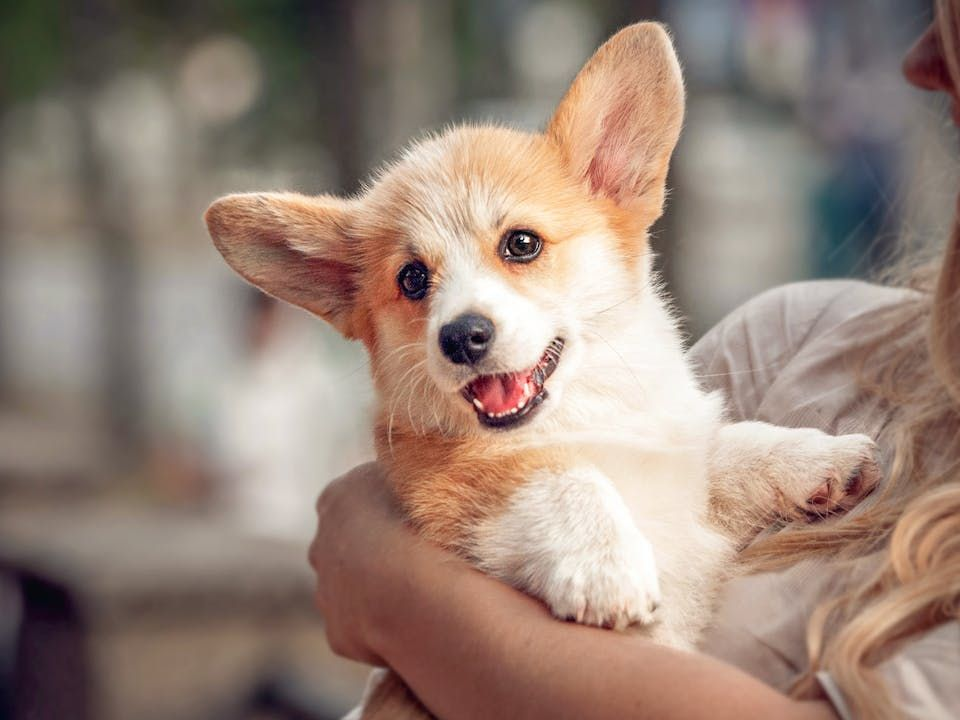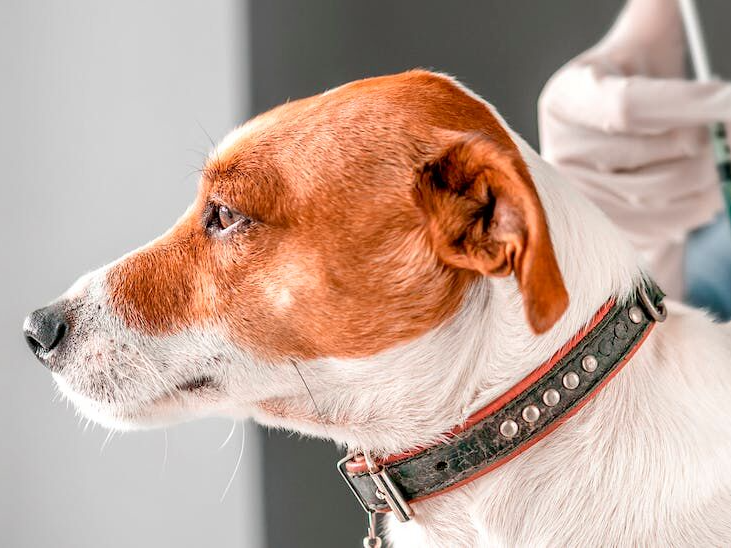How to prepare for your puppy's first walk
Article

When can your puppy go outside for the first time?
Taking your puppy outside for their first walk helps them learn life skills like toilet training and get used to new sights and smells. However, you must be careful as young puppies have immature immune systems, making them vulnerable to diseases like parvovirus and distemper.
To protect your puppy from these diseases, avoid walks until two weeks after their vaccinations. However, immunity varies by shot, so make sure you get all the vaccinations you need from either your veterinarian or breeder.
Therefore, until your puppy is fully vaccinated, take them outside via a stroller or carrier so they can get used to all the new sights, smells, and sounds. Experiencing all these things will still tire them out without them even touching the ground.

When can your puppy go out for the first time?
To protect your puppy from disease, avoid walks until two weeks after they have had all vaccinations. Immunity can vary by shot, so ask your veterinarian when the protection takes effect. Many puppies have their shots before they leave their breeder or shelter so make sure the breeder or vet has given you all their vaccination info before you take your new puppy home.
Your dog is ready for puppy training classes once they have had their first round of shots. The puppies in the class are all at the same vaccination level, so your puppy can learn socialization and basic skills safely.
Get ready for your puppy’s first walk
When you head out walking with your puppy, they will eagerly explore all the unfamiliar smells and distractions. There are a lot of things you can do to make sure puppy walks are positive experiences.
During those early puppy walks, lots of tasty treats and verbal praise are essential. Find a quiet place to take your puppy walking. They can explore without the hustle and bustle of people and other dogs. Your puppy may pull on the leash or walk between your legs, getting you both tangled up, but with patience, your puppy will figure out your walking expectations. Praise your pup when they walk beside you, and allow them to explore their new surroundings.
Three common mistakes to avoid on that first walk are:
1.
Going out before your puppy has gotten used to walking on a leash
2.
Going too far or exercising too much
3.
Not preparing for a positive experience
Preparing your puppy for a successful first walk
There are various things you can do to prepare before your puppy’s first walk so that it is successful:
Try baby steps
Practice makes perfect
Watch out for any distractions
Practice makes perfect!
Let your puppy set the pace
Don't expect your puppy's walking pace to be consistent. Puppies explore with their eyes, ears, nose and mouth (make sure to supervise what they pick up). Walking can quickly become frustrating if you expect your puppy to walk calmly beside you on their first excursions outside.
Be prepared
Try baby steps
Practice makes perfect
Watch out for any distractions
Practice makes perfect!
Let your puppy set the pace
Don't expect your puppy's walking pace to be consistent. Puppies explore with their eyes, ears, nose and mouth (make sure to supervise what they pick up). Walking can quickly become frustrating if you expect your puppy to walk calmly beside you on their first excursions outside.
Be prepared
How to train your puppy to walk on a leash
When walking your dog on a leash there are things you should consider and incorporate so that the process feels like second nature to your puppy.
How long and how often should you walk your puppy?
Puppies have low stamina and will sit down and be done walking when they get tired. The distance and duration of walks depend on your puppy's physical condition, breed, and stamina.

How often should you walk your puppy?
How often you should walk your puppy depends on their physical condition and stamina.
The general rule of thumb for walks is five minutes for every month of your puppy’s age. However, it is important to watch for signs that your puppy is getting tired as you are walking them.
Typical signs of exhaustion include:
• Panting
• Yawning
• Loss of interest
• Refusing to walk further
• Licking lips
When your puppy shows these signs, it typically means you have over-walked them and you may need to carry them home as they are too tired.

Tracking your distance
The distance of your walk varies as well. A Golden Retriever with more energy will walk further than a small Yorkie. In their first year, puppies should go on short rather than long walks. Tender paw pads can become sore, and underdeveloped joints can be damaged.
Tips to safely walk your puppy
How should a collar sit on your puppy?
A collar should be well-fitted. If you are unsure about using a collar, then harnesses are a great alternative as they cause a lot less strain to their neck.
Why are tags important?
Dog tags contain contact information for you as the owner so that when you take your puppy/dog out you can identify them or someone else can if they were to get lost. Tags are a good option but not a replacement for more accurate ID options like microchips.
What are the essentials to take on a walk?
The important items to take on your walk are poop bags, treats, and fresh water (via a pet bottle or portable water bowl).
Can puppies interact before their vaccinations?
Yes! - While you should not walk your puppy before their vaccinations, you can take different approaches of introducing them to other puppies through puppy training classes as all the puppies should be at the same vaccination stages.
What conditions should you not walk your puppy?
It is crucial to pay attention to the weather when preparing to walk your puppy. Hot weather can cause burns to paw pads easily. Also, cold conditions can cut paw pads and cause frostbite. If you are in an area prone to extreme weather, consider buying a dog coat and a set of dog boots.
Related articles
Like & share this page

